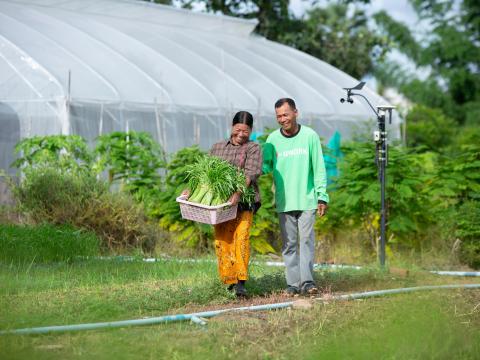The Long Game: Why Investing in Resilience Is Saving Lives in Fragile Contexts

As humanitarian needs soar and funding tightens, World Vision’s new guidelines aim to turn short-term fixes into lasting solutions. The Multi-year resilience programming is helping families withstand shocks, maintain food security, and safeguard children’s futures.
When climate shocks and protracted conflicts collide, emergency aid alone can’t keep pace. For millions of children in fragile contexts, survival depends on something deeper: resilience. In FY25, World Vision doubled down on this approach, launching Resilience Programming Guidelines—a practical framework to help humanitarian actors move beyond short-term relief and build lasting adaptive capacity.
The timing couldn’t be more urgent. Rising displacement, intensifying climate crises, and shrinking humanitarian budgets demand solutions that endure. “Resilience means families can withstand shocks without resorting to harmful coping strategies that put children at risk. With the change in funding landscape, multiple shocks and increasing fragility , focus on resilience building and strengthening is imperative,” says Sibonginkosi G.. Mungoni, Senior Advisor, Livelihoods and Economic Recovery in Emergencies, World Vision International.
The commitment is backed by scale. In FY25, USD 65 million was invested in resilience-focused programming, with major donors like WFP (USD 30M), UNOCHA (USD 2.5M), ADH (USD 3.28M), and UNHCR (USD 5.1M) joining forces. These investments supported initiatives that reached 1.8 million people, enabling families to maintain food security and protect children’s health and education.
Field-level impact tells the real story. In Malawi, 24,283 households adopted climate-smart agriculture and savings schemes, cutting child malnutrition by 22% and improving diets. In Cambodia, 900 households across 73 villages embraced integrated solutions—combining resilient farming, nutrition education, and market access—to break cycles of vulnerability. “With the borehole so close, I water my garden every day,” says Anna, a mother in Malawi. “It feeds my family and brings income.”
These successes underscore a shift in humanitarian thinking: resilience as a core pillar, not an afterthought. World Vision’s guidelines emphasise sectoral integration, donor alignment, and evidence-based design—positioning resilience as central to global programming. Looking ahead, the organisation plans to scale integrated, field-led solutions that shield children from cascading crises—ensuring they grow up in safer, healthier and more stable environments.
In a world of rising shocks, resilience is about securing tomorrow.